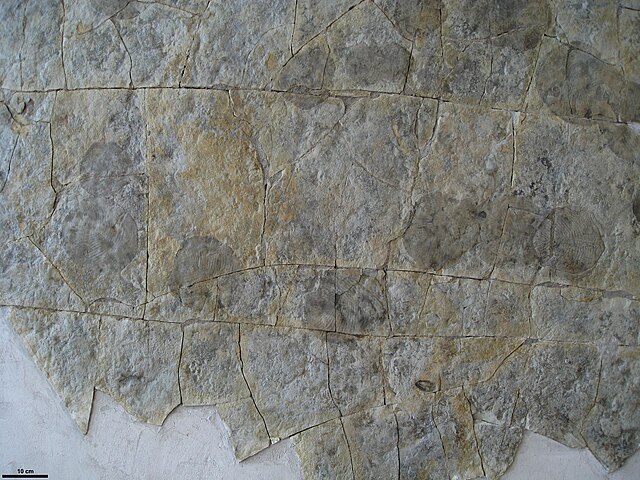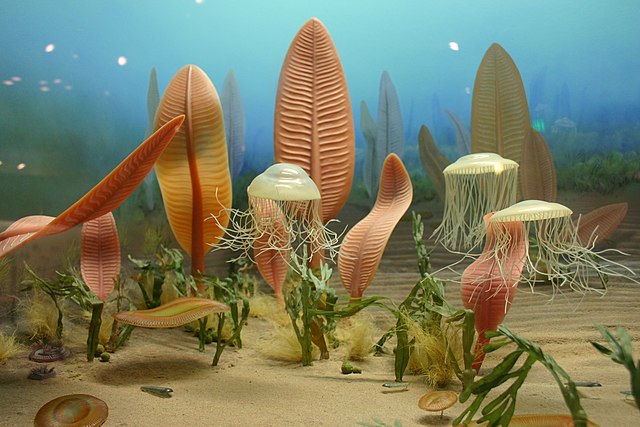Yorgia waggoneri is a discoid Ediacaran organism. It has a low, segmented body consisting of a short wide "head", no appendages, and a long body region, reaching a maximum length of 25 cm (9.8 in). It is classified within the extinct animal phylum Proarticulata.
Yorgia
Epibaion waggoneris, chain of trace platforms and the imprint of the body of Yorgia waggoneri (right), which created these traces.
The Ediacaran biota is a taxonomic period classification that consists of all life forms that were present on Earth during the Ediacaran Period. These were enigmatic tubular and frond-shaped, mostly sessile, organisms. Trace fossils of these organisms have been found worldwide, and represent the earliest known complex multicellular organisms. The term "Ediacara biota" has received criticism from some scientists due to its alleged inconsistency, arbitrary exclusion of certain fossils, and inability to be precisely defined.
Life in the Ediacaran Period, as imagined by researchers in 1980.
Palaeontologist Guy Narbonne examining Ediacaran fossils in Newfoundland
Modern cyanobacterial-algal mat, salty lake on the White Sea seaside
A reconstruction of the Ediacaran biota at the Field Museum in Chicago






